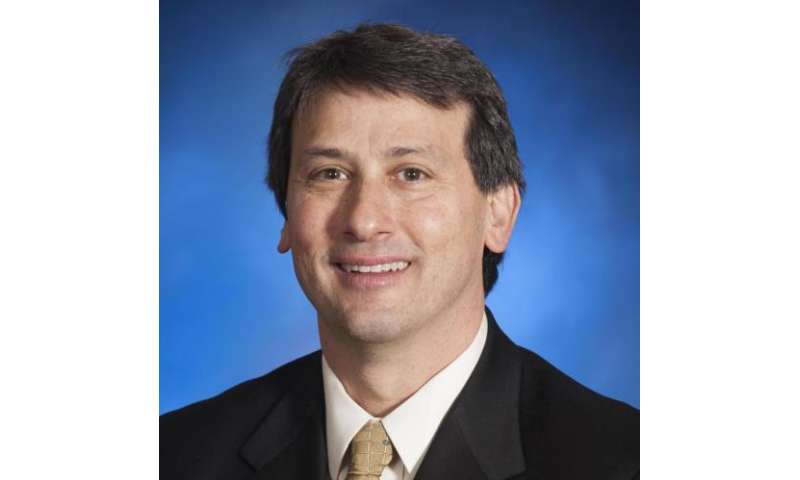IEEE honors NYU researchers for breakthrough paper on new-generation wireless technology

The Institute of Electrical and Electronics Engineers (IEEE) named a research team led by Professor Theodore (Ted) Rappaport, founder and director of the NYU WIRELESS research center, as the recipient of the 2015 IEEE Donald G. Fink Award for work published in 2013. The annual award is given to a single survey, review, or tutorial paper published in any of the IEEE's 170 publications during the previous calendar year. The winning article, "Millimeter Wave Mobile Communications for 5G Cellular: It Will Work," provides pioneering research results and surveys the potential of a new segment of radio-wave spectrum that could increase mobile network capacity a thousand-fold or more.
The paper, which was among the top five downloaded by the IEEE's 430,000 members in June 2014, explores the underutilized millimeter-wave (mm-wave) frequency spectrum for future broadband cellular communication networks as a solution to the global bandwidth shortage facing wireless carriers and users.
With demand for bandwidth reportedly doubling every year thanks to steadily increasing levels of video gaming, Web browsing, and media streaming on mobile devices, the mm-wave research by Rappaport and his students is paving the way for 5G (Fifth Generation) wireless technology, which will have the ability to handle at least 50 times more traffic than today's 4G technology and is projected to be in place by 2020.
"All of the content we could ever consume in our lives could be downloaded to our portable wireless devices as we move about," Rappaport predicted. "New peer-to-peer networks will emerge. I see wireless entering its renaissance as the explosion in bandwidth comes to the edge of each wireless network, allowing cell phones and computers and the Internet of Things (IOT) to access data at speeds that are 1,000 or 10,000 times greater than today's fastest Wi-Fi networks."
Current mobile broadband networks use longer wavelengths (lower frequencies) because of favorable propagation characteristics that support distances greater than a kilometer while penetrating buildings. Rappaport and his colleagues, however, are studying radio waves at 28, 38, 60, and 73 Gigahertz, more than 10 times greater than any cellular frequency used today, and are demonstrating that transmissions at these frequencies—with wavelengths that are smaller than a fingernail—hold potential far beyond what experts had expected: mere line-of-sight transmission and reception. Instead, the NYU WIRELESS tests are finding rich scatterings, with radio signals reflecting off buildings and even people, so that they can travel down city blocks when used in conjunction with new types of antennas.
The high prices now being bid at Auction 97 in the United States for spectrum at 1.7 and 2.1 Gigahertz have shocked some industry experts, and demonstrate today's severe spectrum shortage. By contrast, the availability of massive swaths of spectrum in the mm-wave bands could immediately quench future demand, and Rappaport's team believes perfecting mm-wave technology can increase mobile capacity faster than any known approach. Their research is laying groundwork for engineers to develop these future wireless systems and for network standardization. The FCC recently cited NYU WIRELESS research in its Notice of Inquiry to explore the feasibility and implementation of mobile technology in the high-frequency mm-wave bands.
Rappaport's co-authors on the paper—Shu Sun, Rimma Mayzus, Hang Zhao, Yaniv Azar, Kevin Wang, George N. Wong, Jocelyn K. Schulz, Mathew Samimi, and Felix Gutierrez—include several undergraduate and graduate students from the NYU Polytechnic School of Engineering and the Courant Institute of Mathematical Sciences. According to Rappaport, "I am so pleased with and proud of my student co-authors, as most of them were sophomore undergraduate students or beginning master's students, experiencing research for the first time in their lives. Their hard work and dedication has had a huge impact on the wireless industry, and was instrumental in launching NYU WIRELESS and convincing industry about the potential for millimeter-wave wireless."
"Millimeter wave technology presents a new frontier of the wireless age," said Katepalli R. Sreenivasan, NYU School of Engineering president and dean. "We are proud of the IEEE's recognition that NYU is at the forefront of this research, and we congratulate Professor Rappaport for bringing together students, faculty, and industry to perform seminal work in this important field."
The award will be presented December 7, 2015 by the president of IEEE during the 2015 IEEE Global Communications Conference, Exhibition & Industry Forum (GLOBECOM) in San Diego, California.
Provided by New York University